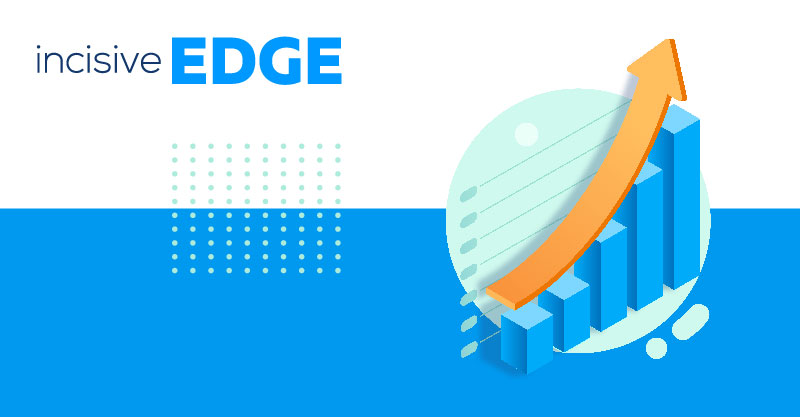If our current situation has taught us anything, it is the importance of a slick digital presence for our businesses, particularly while face to face engagements are not an option for many of us.
If you're using your website solely for posting updates or shoutouts, its performance can suffer and become a repository of poor-quality content. To address this, you can optimize your website using search engine optimization techniques and website optimization tools to improve site structure. By leveraging these resources, you can enhance the user-friendliness and appeal of your website, ensuring optimal performance and a better experience for your audience while benefitting from your website's performance.
Far better to put yourself in the shoes of your target audience and consider the problems that they have and what they need to know when visiting your website.
Learn more about conversion rate optimisation:
- Top 3 Tactics to Supercharge Your Website Conversion Today
- 3 Great Design Tips to Increase Website Conversion Rate
- Boost Your Conversion Rate: The Significance of Optimisation
Can you help them solve their problem? Will it be a great experience to work with your company / brand? Can they speak with one of your clients? How can they engage with you?
These are just some of the questions your prospects will have for where they are in their own buying and decision making journey. So the question you need to answer is how can your website answer those questions - quickly – before your prospects visit your competitor’s site?
Quick wins to optimise your website to build your digital lead pipeline.
1. Clear value proposition on home page
Don’t confuse your value proposition with a strapline or slogan. Your value proposition needs to clearly state the value your company provides. Ideally, your proposition should include a differentiating statement to make you stand out from other offerings. Your value proposition should be the first thing your prospects see on your site – front and centre. Your above the fold area on your home page should play to your proposition.
2. Simple messaging for your target audience
To ensure effective communication with your target audience, it's essential to maintain clear and concise messaging that aligns with their preferred terminology. This approach facilitates their understanding of the platform, products, services, or solutions you offer, allowing them to identify themselves in the context you present. Consider incorporating a website performance optimization tool to enhance web page and website speed, as this can greatly improve overall performance.
3. Implement user journeys
Build in simple user journeys, ideally for each of your buyer personas, to nurture your leads through the different steps of your funnel and their buying and decision-making process. This will engender further engagement until they are ready to become a customer. A good approach here is to start simple, test and gather data on your results as to what is / isn’t working and then, based on your analysis, build upon your user journeys.
4. Keep your content open with a few well-placed lead magnets
When creating web pages, your focus should be on optimizing your website to be user-friendly for mobile users. This includes developing a website optimization strategy that ensures your content is useful and interesting to your target audience. Utilize tools like Google Search Console to understand your website's performance in search results and identify areas for improvement. Additionally, leverage Google Analytics to track user behavior and website traffic, enabling you to make informed decisions about your content strategy. Keep your content accessible and shareable to maximize its reach without requiring user contact information. Encourage others to read, share, and enjoy your content, especially mobile users.
Of course, this needs to be balanced with your requirement for filling the top of your funnel with prospects for you to engage with.
This is where a few well-placed, high value content assets, such as an eBook or guide, will add value.
Invest your time in creating something in-depth that will help your audience and clearly state the value the asset will deliver in return for their contact details. You may be surprised how many companies forget to tell their prospects what value they will receive from downloading the eBook or guide etc. Don’t assume your prospects will automatically appreciate or be aware of the value-led information they could receive just from the title of the content.
Which leads me on to…
5. SEO, SEO, SEO, Search Engine Optimization Matters
Search Engine Optimisation (SEO) should form a central part of any digital marketing strategy.
You need to have a clear SEO strategy in place that factors in the two sides of SEO; technical and content (or off and on-site) and is regularly reviewed to ensure it reflects the latest updates in SEO techniques and search engine algorithms.
Please note that “appear as the #1 result in Google” is not a SEO strategy.
Effective SEO management requires ongoing attention as the digital landscape is constantly evolving. It's important to regularly conduct keyword research and implement optimization strategies to ensure your website remains relevant and appears at the top of search engine results. In addition, broken links should be identified and fixed promptly to improve the user experience for website visitors. Web optimization should also be a priority to ensure your site is fast and easy to navigate, which can further improve search engine rankings. Overall, ongoing attention and effort are key to successful SEO management.
And don’t forget to include your images when it comes to SEO optimisation.
From a content perspective, you need to consider your keywords before putting your heart and soul into creating content. Only by optimising your content do you have the opportunity for your target audience to find you. By grouping your keywords, using seed keywords and sub-keywords in your research and by using them in your copy, you can strengthen your content even further.
From a technical SEO perspective, consider the relevant long-tail keywords and the Difficulty Ranking of your keywords. A high Difficulty Ranking means you are unlikely to rank within the top search engine results for that keyword, as the competition will just be too great.
6. Nurture flow emails and well-timed automation
Spoiler alert – it is unlikely that your target audience will convert or purchase your product (if they can even purchase it via the website), on their first visit. Sad, but true.
You have spent all that time sourcing those contacts to target, just for them to visit your website once, then disappear forever.
This is where nurture flow emails and well-timed automation can really boost your lead generation results.
If you are a B2B business, you can use a similar approach to that used by B2C businesses for years – the “you left something in your basket” email. Of course, to be able to send them the follow up email you need to have captured their email address in the first place, which is why the high value content asset in point 4 is key.
To enhance your B2B email marketing efforts, it's important to optimize your website with relevant keywords to improve its performance in search engine results. Additionally, ongoing optimization efforts should be made to ensure your site is fast and user-friendly. When following up with contacts, provide additional value by including a relevant piece of information, such as your latest blog post on a topic of interest to them, or an infographic that can assist them in building their business case. By incorporating these tactics, you can strengthen your B2B email marketing and drive more traffic to your website.
7. Make sure your communications are human – and if they are not, clearly identify it is automated or a chat bot to manage user expectations
How many times have you clicked on the live chat function of a website where a photo of the “person” you are instant messaging with pops up as you are introduced to “Cheryl.” Then after a few messages back and forth you realise it is an unsophisticated bot that you are dealing with.
Frustrating, right?
Don’t get me wrong, chat bots can be awesome, but this is about managing your user’s expectations to deliver a great user experience.
Of course you can use chat bots. However, they need to be thought through to ensure they add value to your website visitor rather than detracting and creating frustration. By managing user expectations from the start, it will help set their expectations regarding the level of intelligent interaction they will receive.
8. Regularly update your website with new blogs, useful information and resources
Ok so this is an obvious one, although you would be surprised how many businesses forget to do this. The crucial point is that you should regularly update your website with GOOD QUALITY content. Find the right balance for your business between creating new content on a regular basis, without sacrificing the quality of your content.
9. Make it easy for people to contact you
Remember to include multiple contact points to make it as easy as possible for people to contact you.
Some people prefer to pick up the phone and call if they have a question - perhaps they’re trying to purchase your product but there is an error on your website that is stopping the transaction going through. Some prefer an email response. Make sure you cater for the communication preferences of your target audience.
It might be that your audience prefers to engage on social media, so offer that as a contact point if it is suitable. If you do though, make sure someone on your team is dedicated to responding quickly (and on brand) to these communications.
10. Marketing automation tool
A good marketing automation tool, set up correctly, can be invaluable and worth the investment in both time and budget. Not only will it give you insights into how users are engaging with your website, campaign landing pages, emails and social activity, it will help you to keep track of new users from the moment they first land on your website and at each stage of the funnel as they convert (once they’ve accepted your cookies policy of course).
Summary
To build a successful digital lead funnel, your website should be optimized for search engines and designed with a clear value proposition and messaging, as well as user-friendly navigation. It's important to also incorporate engaging and useful content that is optimized for both desktop and mobile devices. Conversion rate optimization should also be a focus, with regular testing and analysis of website performance to improve lead generation. Utilizing SEO tools can help identify areas for improvement and measure the effectiveness of optimization efforts. By implementing these strategies, your website can become a powerful lead-generating machine.










